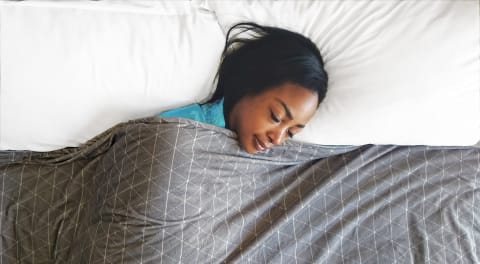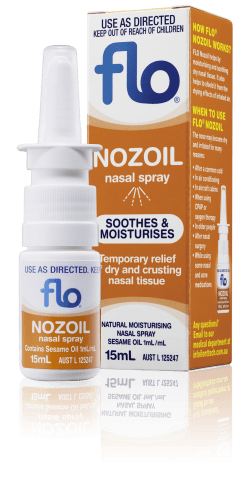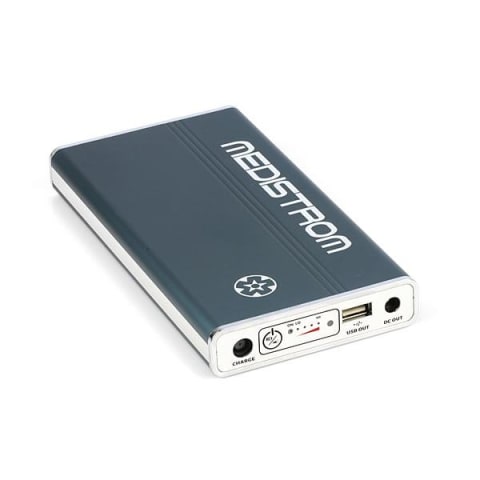CPAP Machine on Plane
Using CPAP on Planes
A Complete Guide for Comfortable, Restful Travel
Why You Should Always Travel with Your CPAP Machine
Travelling with a CPAP machine isn’t just a nice-to-have for people living with sleep apnea — it’s a necessity. Whether you’re flying across the country or overseas, maintaining your therapy on the go is essential to ensuring you arrive feeling rested and ready to enjoy your destination. Even one skipped night of CPAP therapy can lead to sleep disruption, grogginess, headaches, and an increased risk of apnea episodes.
Fortunately, travelling with a CPAP machine has never been easier. Today’s devices are lighter, more compact, and packed with travel-friendly features. Machines like the ResMed AirMini are purpose-built for portability. These compact options fit neatly into your carry-on bag and can be powered by CPAP-compatible batteries. Some models even include waterless humidification, which makes them especially suited to the dry cabin air you’ll experience at altitude.
The ability to continue your therapy uninterrupted means better energy, reduced health risks, and a more comfortable experience while travelling. For frequent flyers or those taking long-haul journeys, having a travel CPAP machine ensures your sleep health stays on track, wherever you are in the world.
Flying with CPAP: What’s Allowed and What’s Not
When it comes to taking your CPAP machine onboard, the good news is that airline regulations are typically very accommodating. CPAP devices are considered essential medical equipment, which means they do not count towards your standard carry-on baggage allowance. You can bring your CPAP on board in its own travel case in addition to your suitcase or personal item.
It’s important to always carry your CPAP machine in the cabin, never in checked baggage. CPAP machines contain sensitive electronics that could be damaged by the rough handling and temperature fluctuations of the aircraft hold. Bringing the device with you ensures you can use it during the flight if needed and prevents the risk of it being lost or delayed.
Although most airline staff are familiar with CPAP equipment, we still recommend travelling with documentation such as a doctor’s letter or an FAA compliance certificate for your device. These documents can come in handy during security checks, customs, or if airline personnel have questions about your machine. Sove CPAP Clinic can assist you in obtaining these materials.
In-Flight CPAP Therapy: How to Use Your Machine in the Air
Using your CPAP machine mid-flight is not only allowed on most airlines — it’s often encouraged, especially for overnight travel or long flights crossing time zones. Continuing therapy during flights helps maintain oxygen levels, prevents fatigue, and keeps symptoms like snoring and apnea-related arousals at bay.
To prepare for in-flight use:
Notify your airline at least 48 hours before your flight if you plan to use your machine onboard. This allows time to arrange seating and confirm power availability.
Choose a window seat, if possible. This setup ensures your tubing doesn’t obstruct neighbouring passengers or the aisle.
Check the aircraft’s power outlets. Some planes offer AC or DC power at the seat, but not all power outlets support CPAP devices. Confirm voltage and connector types in advance.
A highly reliable alternative is using a portable CPAP battery. FAA-approved lithium-ion batteries are designed for air travel and can power your machine for a full night. Brands like Medistrom and ResMed offer batteries that pair seamlessly with their devices, and they are available through Sove.
For maximum comfort, use a travel pillow or neck cushion to help stabilise your position, and consider a shorter length of tubing to reduce tangling or movement in your seat. If your machine supports airplane mode, be sure to activate it before takeoff.
CPAP and Altitude: Ensuring Effective Therapy in the Air
Altitude and pressurised cabin environments present a unique challenge, especially for older CPAP models. Luckily, most modern CPAP machines are built to handle these changes seamlessly. Auto-adjusting CPAP (APAP) devices are particularly well-suited to altitude, as they monitor and adapt pressure in real time to ensure optimal therapy.
If you’re using a machine that doesn’t automatically adjust, speak to a Sove consultant before your trip. We can walk you through any necessary manual settings or recommend a more travel-ready model for your needs.
Other helpful tips for altitude use:
Turn off your humidifier. The risk of water spillage increases with cabin pressure changes and turbulence.
Use waterless humidification like ResMed’s HumidX. These small cartridges trap and release moisture from your exhaled breath, creating a humidification effect without needing water.
Secure your setup. Place your machine on the tray table or at your feet (with a protective mat), and ensure all tubing is free from kinks.
Should you need guidance on setting up or adjusting your machine for flight, Sove offers telehealth support and pre-travel consultations to help get you flight-ready.
Why Travellers Choose Sove CPAP Clinic
Navigating CPAP therapy on the go can be overwhelming, but it doesn’t have to be. At Sove CPAP Clinic, our mission is to simplify the process with expert advice, quality equipment, and ongoing support to make your therapy as seamless as possible — whether at home or abroad.
We carry a curated selection of travel-ready CPAP machines, including:
- ResMed AirMini: The world’s smallest CPAP machine, ideal for carry-on bags.
- Philips DreamStation: A robust, compact option with touchscreen controls and optional battery.
- Fisher & Paykel SleepStyle+: Great for longer trips, with built-in humidification and easy setup.
ALWAYS FOLLOW THE DIRECTIONS FOR USE. CPAP is used for Obstructive Sleep Apnoea treatment. When considering whether CPAP is right for you, speak to your doctor.
CPAP & Planes: Frequently Asked Questions
Is a CPAP machine considered carry-on luggage or a personal item? A CPAP machine is classified as medical equipment and is generally allowed in addition to your regular carry-on allowance. Most airlines will not count it toward your baggage limit, especially if it is stored in its own bag. It’s essential to check your airline’s policy, but in most cases, you can carry your CPAP onboard alongside your hand luggage. We recommend labelling the CPAP bag clearly with “Medical Equipment” for ease during boarding and security. Carrying the machine on board also ensures it isn’t damaged, lost, or delayed, which could severely impact your ability to use therapy that night.
Do I need to declare my CPAP machine when travelling by plane? While it’s not mandatory to declare your CPAP machine in advance for most airlines, it is highly advisable to let the airline know at least 48 hours prior to departure, especially if you plan to use the machine during the flight. Declaring it allows the airline to prepare accordingly—including ensuring you have a power-equipped seat (if available) or assigning a window seat to reduce obstruction. It can also streamline the check-in and boarding process. Additionally, having a doctor’s letter or manufacturer compliance certificate on hand is recommended for international travel or flights with more stringent screening.
How do I pack my CPAP for travel? Proper packing protects your machine and makes travel smoother. Always use a padded travel case—most CPAP machines come with one. Disassemble the machine and pack the mask, tubing, and power cords securely to prevent shifting. If your machine has a humidifier, empty and dry it before travel to prevent leaks. Pack a copy of your prescription, manufacturer compliance letter, and any medical letters in a side pocket. It’s also a good idea to include a tag indicating the bag contains medical equipment. If you’re carrying a travel battery, store it in your carry-on luggage in accordance with airline regulations.
How do I power my CPAP machine on a plane? There are a few options for powering your CPAP on board. Some long-haul and international flights offer AC or DC power outlets at the seat, but not all are compatible with CPAP plugs or wattage requirements. A more reliable option is to use an FAA-approved portable battery pack designed for CPAP use. These batteries are designed to power your device for a full night and are small enough to fit in your carry-on. Ensure the battery is fully charged before your flight, and check its runtime based on your pressure settings and whether you plan to use the humidifier. For those without a battery, consult your airline regarding available power sources and bring the appropriate adapter.
How do you use a ResMed CPAP on a plane? Using a ResMed CPAP device on a plane is straightforward with a few preparations. First, ensure the model you’re using is FAA-approved (e.g. ResMed AirMini or AirSense 10). Before your flight, turn off the humidifier and remove any remaining water from the water chamber. If you’re using the AirMini, consider using the HumidX cartridge for waterless humidification. Switch the device to Airplane Mode to disable wireless functions. Position the device on your tray table or securely by your feet. Notify cabin crew that you’re using medical equipment and have your compliance letter ready if requested. With these steps, your ResMed device should perform effectively and comfortably in-flight.
Is a CPAP machine considered carry-on luggage or a personal item? A CPAP machine is classified as medical equipment and is generally allowed in addition to your regular carry-on allowance. Most airlines will not count it toward your baggage limit, especially if it is stored in its own bag. It’s essential to check your airline’s policy, but in most cases, you can carry your CPAP onboard alongside your hand luggage. We recommend labelling the CPAP bag clearly with “Medical Equipment” for ease during boarding and security. Carrying the machine on board also ensures it isn’t damaged, lost, or delayed, which could severely impact your ability to use therapy that night.
Do I need to declare my CPAP machine when travelling by plane? While it’s not mandatory to declare your CPAP machine in advance for most airlines, it is highly advisable to let the airline know at least 48 hours prior to departure, especially if you plan to use the machine during the flight. Declaring it allows the airline to prepare accordingly—including ensuring you have a power-equipped seat (if available) or assigning a window seat to reduce obstruction. It can also streamline the check-in and boarding process. Additionally, having a doctor’s letter or manufacturer compliance certificate on hand is recommended for international travel or flights with more stringent screening.
How do I pack my CPAP for travel? Proper packing protects your machine and makes travel smoother. Always use a padded travel case—most CPAP machines come with one. Disassemble the machine and pack the mask, tubing, and power cords securely to prevent shifting. If your machine has a humidifier, empty and dry it before travel to prevent leaks. Pack a copy of your prescription, manufacturer compliance letter, and any medical letters in a side pocket. It’s also a good idea to include a tag indicating the bag contains medical equipment. If you’re carrying a travel battery, store it in your carry-on luggage in accordance with airline regulations.
How do I power my CPAP machine on a plane? There are a few options for powering your CPAP on board. Some long-haul and international flights offer AC or DC power outlets at the seat, but not all are compatible with CPAP plugs or wattage requirements. A more reliable option is to use an FAA-approved portable battery pack designed for CPAP use. These batteries are designed to power your device for a full night and are small enough to fit in your carry-on. Ensure the battery is fully charged before your flight, and check its runtime based on your pressure settings and whether you plan to use the humidifier. For those without a battery, consult your airline regarding available power sources and bring the appropriate adapter.
How do you use a ResMed CPAP on a plane? Using a ResMed CPAP device on a plane is straightforward with a few preparations. First, ensure the model you’re using is FAA-approved (e.g. ResMed AirMini or AirSense 10). Before your flight, turn off the humidifier and remove any remaining water from the water chamber. If you’re using the AirMini, consider using the HumidX cartridge for waterless humidification. Switch the device to Airplane Mode to disable wireless functions. Position the device on your tray table or securely by your feet. Notify cabin crew that you’re using medical equipment and have your compliance letter ready if requested. With these steps, your ResMed device should perform effectively and comfortably in-flight. </script>













